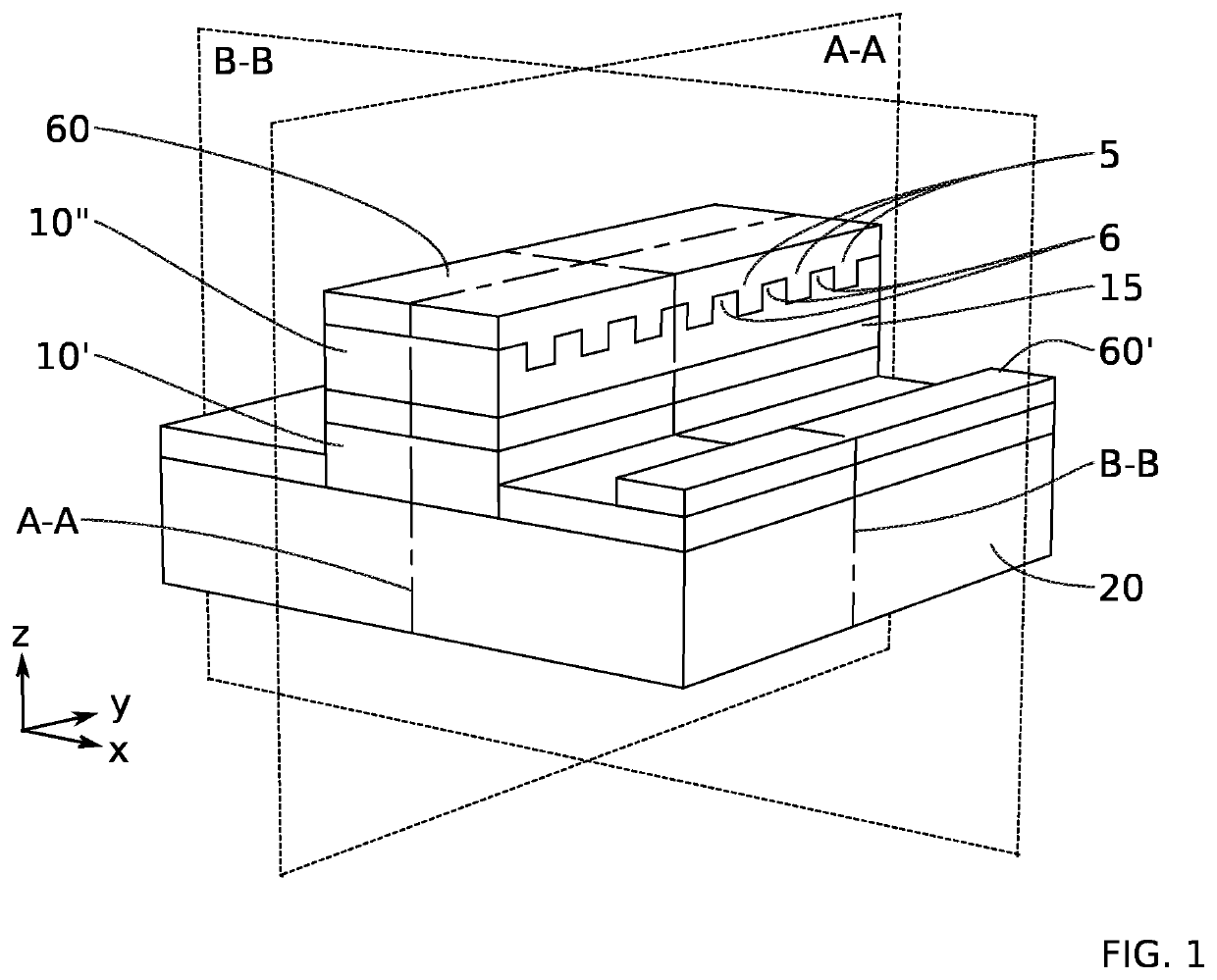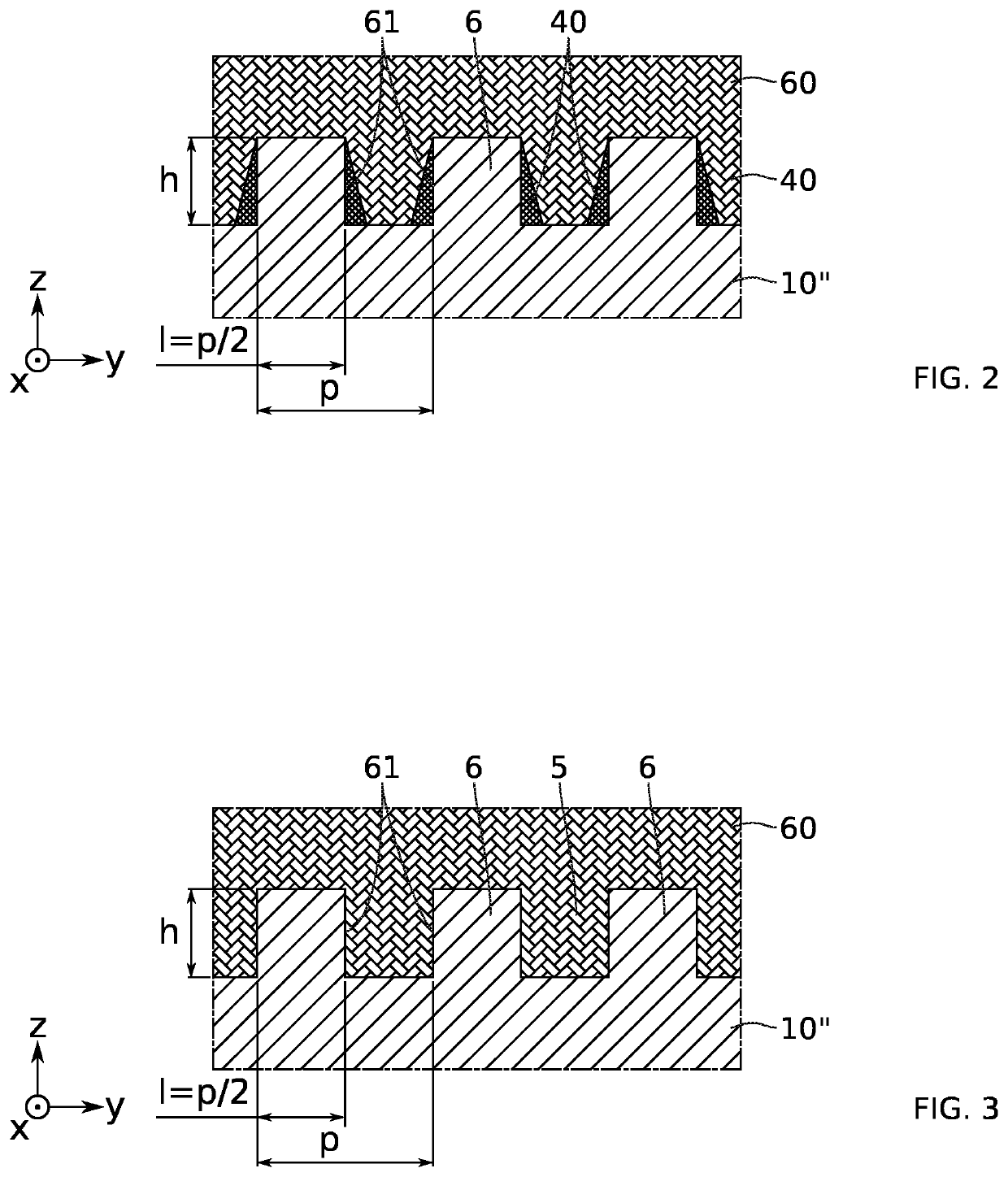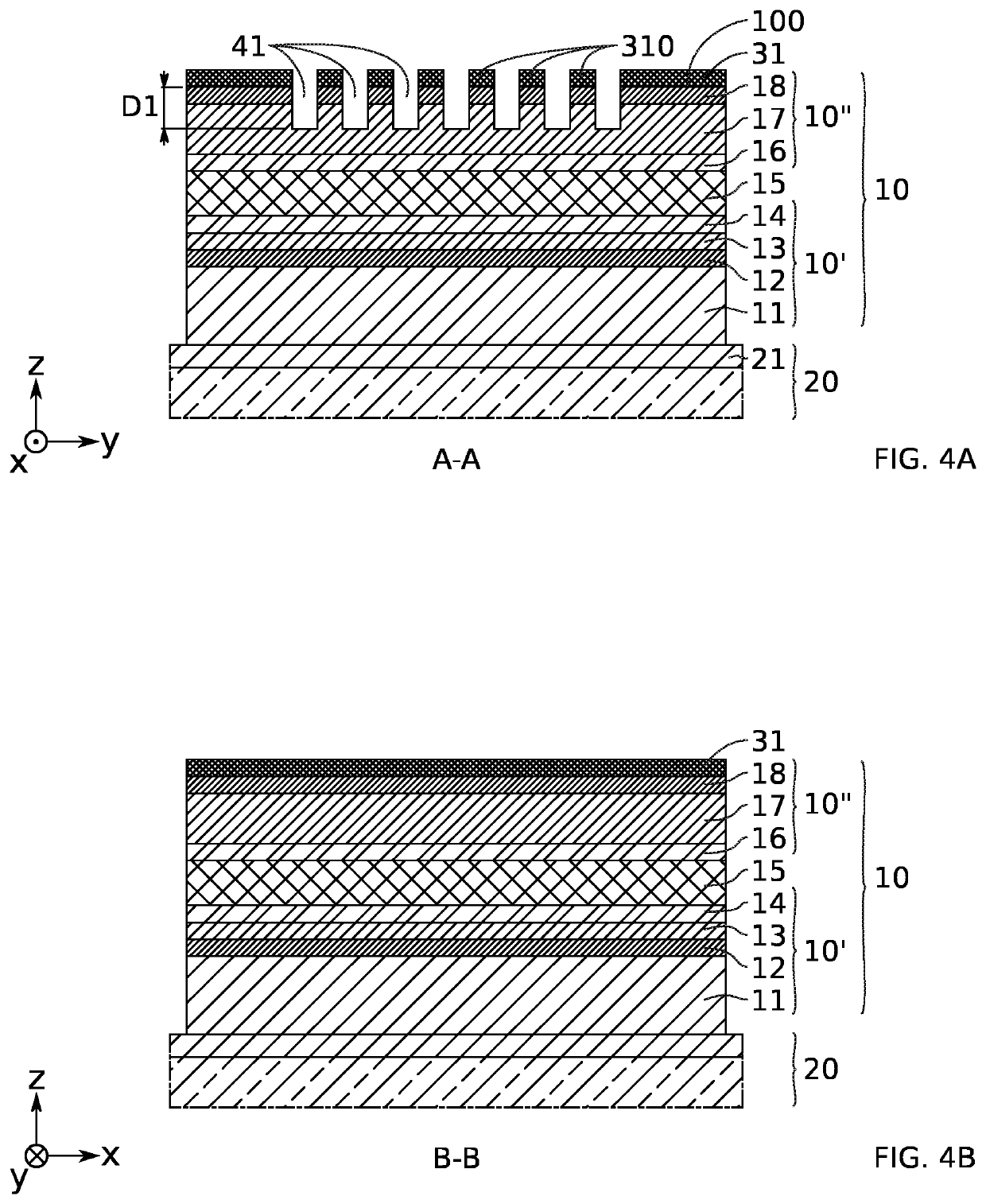Method of making a distributed bragg mirror
a bragg mirror and distributed technology, applied in the field of optoelectronics, can solve the problems of reducing the contact area between the metal and the upper guide layer, the need to carefully remove the hard mask, and the general imperfection of trench cleaning, so as to achieve good electrical injection, reduce the contact area, and eliminate the effect of difficulty
- Summary
- Abstract
- Description
- Claims
- Application Information
AI Technical Summary
Benefits of technology
Problems solved by technology
Method used
Image
Examples
Embodiment Construction
[0040]Before giving a detailed review of embodiments of the invention, optional features are set out below, which can be used in combination with or in replacement of one another.
[0041]According to one example, the sacrificial interlayer is silicon oxide-based and the second masking layer is silicon nitride-based. These two materials have good etch selectivity, typically for hydrofluoric acid-based wet etching. This facilitates removal by lift-off. These materials are also compatible with CMOS technology.
[0042]According to one example, the sacrificial interlayer has a substantially constant thickness e comprised between 100 nm and 300 nm. It can typically be formed by conformal deposition. A constant thickness allows for better control of the lift-off method.
[0043]According to one example, the first trenches are formed by anisotropic etching in a third direction z normal to the first and second directions x, y.
[0044]According to one example, the sacrificial interlayer is removed by ...
PUM
| Property | Measurement | Unit |
|---|---|---|
| thickness | aaaaa | aaaaa |
| thickness | aaaaa | aaaaa |
| thickness | aaaaa | aaaaa |
Abstract
Description
Claims
Application Information
 Login to View More
Login to View More - R&D
- Intellectual Property
- Life Sciences
- Materials
- Tech Scout
- Unparalleled Data Quality
- Higher Quality Content
- 60% Fewer Hallucinations
Browse by: Latest US Patents, China's latest patents, Technical Efficacy Thesaurus, Application Domain, Technology Topic, Popular Technical Reports.
© 2025 PatSnap. All rights reserved.Legal|Privacy policy|Modern Slavery Act Transparency Statement|Sitemap|About US| Contact US: help@patsnap.com



